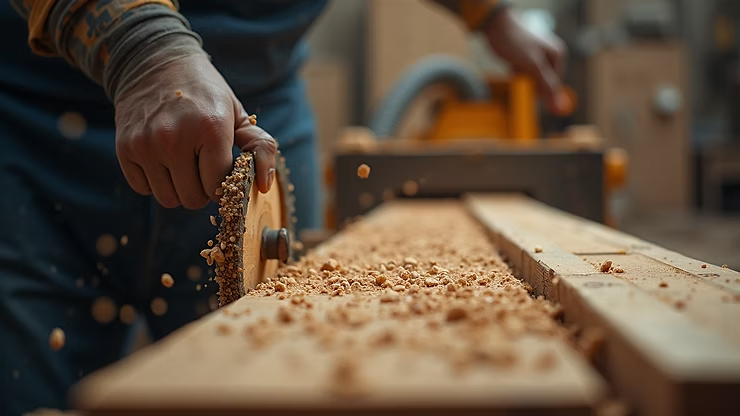Sawmilling offers an exciting path for hobbyists eager to transform raw timber into usable lumber. Whether you’re looking to build furniture, create art, or simply enjoy the satisfaction of crafting your own materials, understanding different sawmill options is crucial. In this blog post, we’ll delve into various sawmill types, helping you decide which one might be the best fit for your sawmilling journey.
What is Sawmilling?
Sawmilling is the process of converting logs into lumber. This process can take several forms and involves specialized equipment designed to make precise cuts. For hobbyists, sawmilling can be rewarding both creatively and economically. You gain access to a wide variety of wood species and can utilize slices of wood that might be costly in a lumberyard.
Sawmill Options: What’s Out There?
Choosing the right sawmill is the foundation of any successful woodworking project. Here are some popular options available to hobby sawyers:
- Band Saw Mills
- Circular Saw Mills
- Portable Sawmills
- Stationary Sawmills
Each sawmill type has its unique strengths and weaknesses. Let’s delve deeper into these options to understand what might suit your needs best.

1. Band Saw Mills
Band saw mills are popular among hobby sawyers due to their versatility and precision. These sawmills use a continuous band blade that allows for intricate cuts that minimize waste.
Features and Benefits
- Precision Cutting: Band saws can make thinner cuts, allowing you more usable wood from your logs.
- Versatile Designs: Available in manual and hydraulic models, band saw mills can accommodate various sizes of logs.
Drawbacks
- Setup Time: While the cutting process is efficient, setting up a band saw mill can take time, especially for newcomers.
- Cost: Quality band saw mills can be pricey, often starting at around $2,000 and climbing higher depending on features.
2. Circular Saw Mills
Circular saw mills employ a set of circular blades to cut logs into lumber. These sawmills are widely used in commercial settings but can also serve hobbyists well.
Features and Benefits
- Speed of Operation: Circular saws can produce lumber more quickly once set up, making them ideal for larger projects.
- Durability: These mills are robust and can handle tough species of wood.
Drawbacks
- Less Precision: Circular saws can produce more waste due to the thickness of the cuts.
- Space Requirements: They often require more space to operate effectively compared to band saw mills.

3. Portable Sawmills
Portable sawmills are designed for mobility. These mills can be taken directly to the site of the logs, allowing you to mill them on the spot.
Features and Benefits
- Mobility: Ideal for rural areas or properties with large amounts of timber.
- Quick Setup: Many portable mills are easy to set up and can begin cutting within minutes.
Drawbacks
- Limited Capacity: Most portable sawmills are designed for smaller logs compared to stationary mills.
- User Skill: They require some experience to operate efficiently, especially when it comes to achieving level cuts.
4. Stationary Sawmills
Stationary sawmills remain fixed in one location. These are generally more significant and powerful options, suited for extensive milling operations.
Features and Benefits
- High Capacity: They can process large logs quickly and efficiently.
- More Control: Advanced models offer features like automatic feed systems and digital settings for precise cuts.
Drawbacks
- Cost: The initial investment for a quality stationary sawmill can be significant, often exceeding $10,000.
- Lack of Mobility: Once installed, moving a stationary mill can be challenging and costly.

Comparing Sawmill Options
When deciding on a sawmill, consider the following aspects:
- Budget: Determine how much you are willing to spend. Affordable band saws and portable mills may suit beginners, while experienced users may invest in more extensive equipment.
- Project Scope: Are you planning on milling just a few logs for personal projects or a significant quantity for commercial purposes?
- Space Availability: Ensure you have enough room to set up and operate your selected mill.
- Experience Level: Newcomers might wish to start with simpler, portable sawmills to learn the ropes before moving on to more complex setups.
Getting Started in Sawmilling
Before you venture into sawmilling, it’s essential to consider a few key points. First, always prioritize safety. Wear protective gear, including goggles and ear protection, as noise levels can get high.
Secondly, invest in basic maintenance tools and learning materials related to your chosen mill type. Proper maintenance ensures safety and longevity for your equipment. Numerous tutorials online could guide you on techniques specific to your mill.
Learning to mill can be both fun and beneficial. You might discover a newfound passion or even an eco-friendly means to source your lumber. Notably, joining communities, attending workshops, or connecting with local sawyers can provide invaluable advice and support.
Embracing the Sawmilling Lifestyle
Sawmilling is not just about making lumber; it’s an opportunity to engage with nature and explore craftsmanship. Whether you’re reclaiming fallen trees from your property, or experimenting with different wood types, the journey is often just as gratifying as the results.
With the right equipment and knowledge, you can enjoy this fulfilling hobby. Remember, it’s essential to stay informed about the latest sawmill technologies and techniques, which can enhance your skill set and improve your craftsmanship.
For fellow hobby sawyers, resources like <a href=”https://sawmillexchange.com” target=”_blank”>Sawmill Exchange</a> can offer valuable insights into buying and selling sawmill equipment.
Enjoy your sawmilling journey, and remember that with every cut you make, you’re not just shaping wood—you’re creating pieces that enhance your surroundings and showcase your creativity!
Future Trends in Sawmilling
Sawmilling continues to evolve as technology advances. Automation is becoming more prevalent, making sawmilling more efficient and less reliant on manual labor. Features like computer numerical control (CNC) are starting to appear in mills, allowing for even more precise cutting.
For hobbyists, this advancement can mean access to higher-quality finished products with less effort. As you continue your sawmilling journey, keep an eye on these trends, as they may influence how you operate and what products you can create.
Now, grab your sawmill and let your creativity flow! Happy milling!

No responses yet